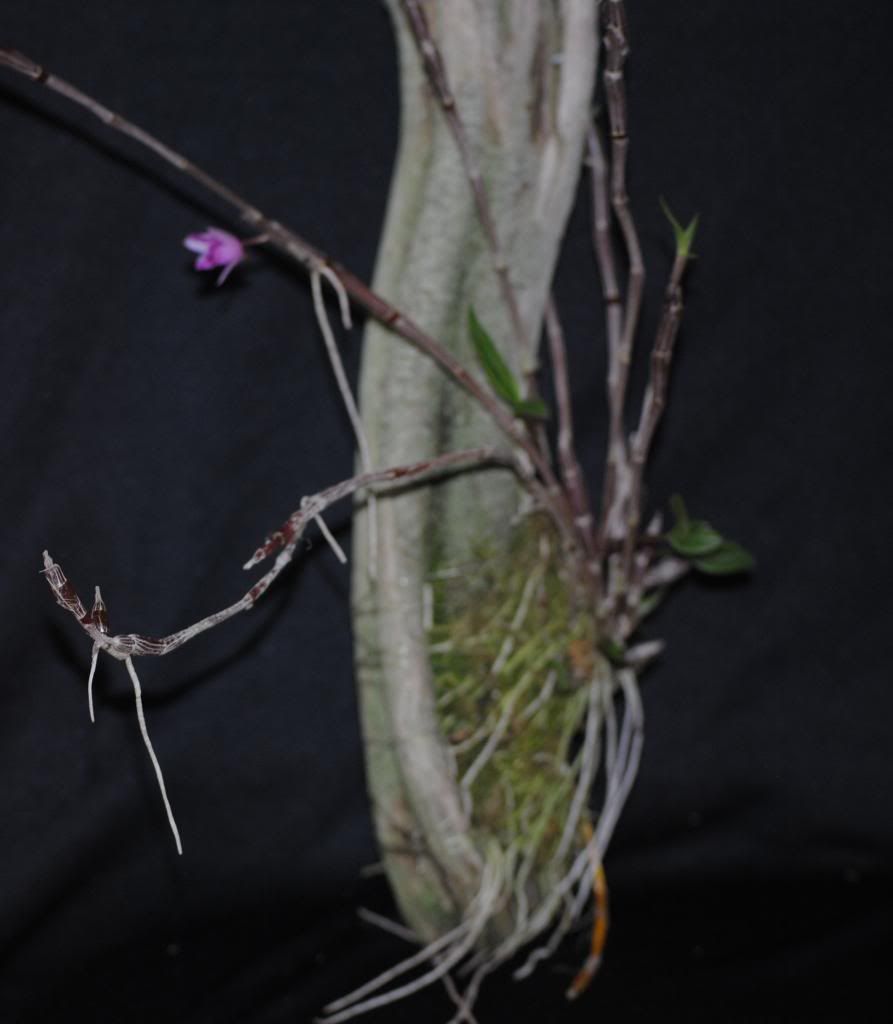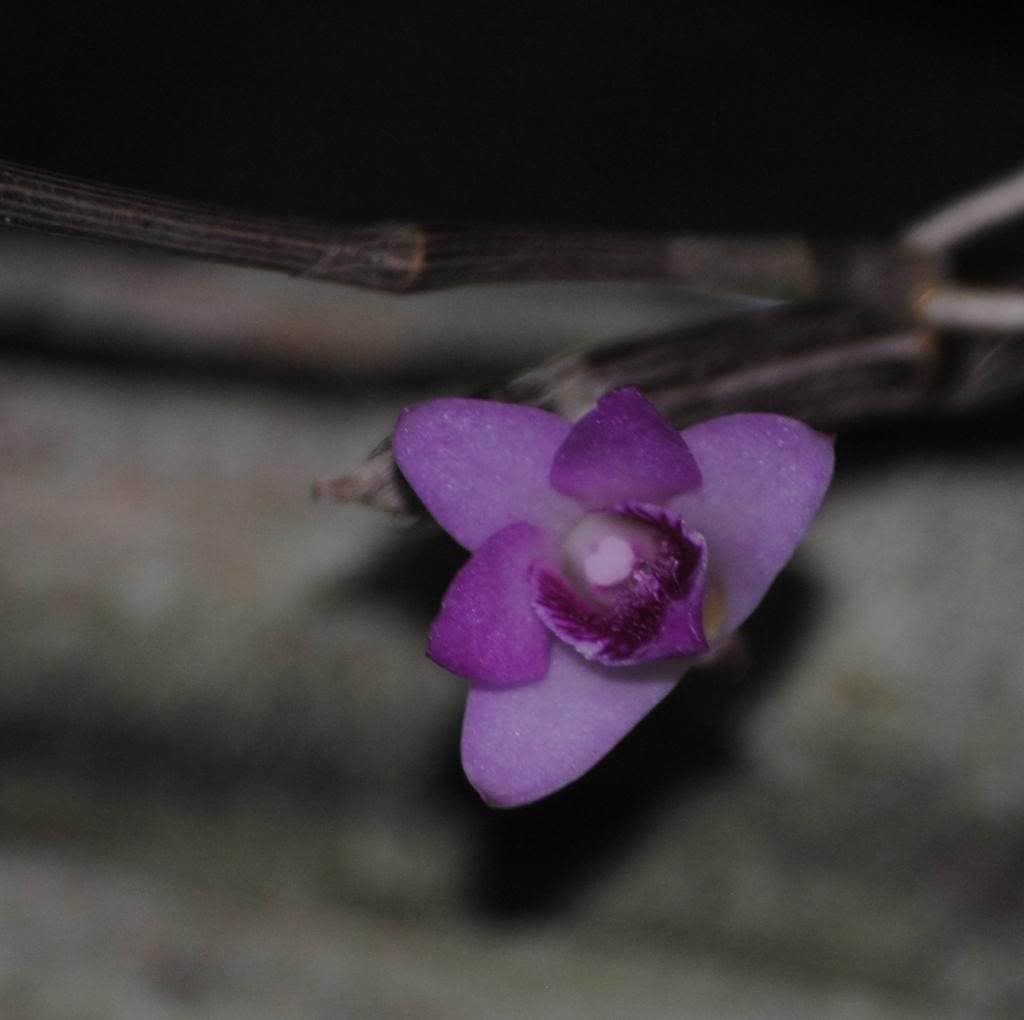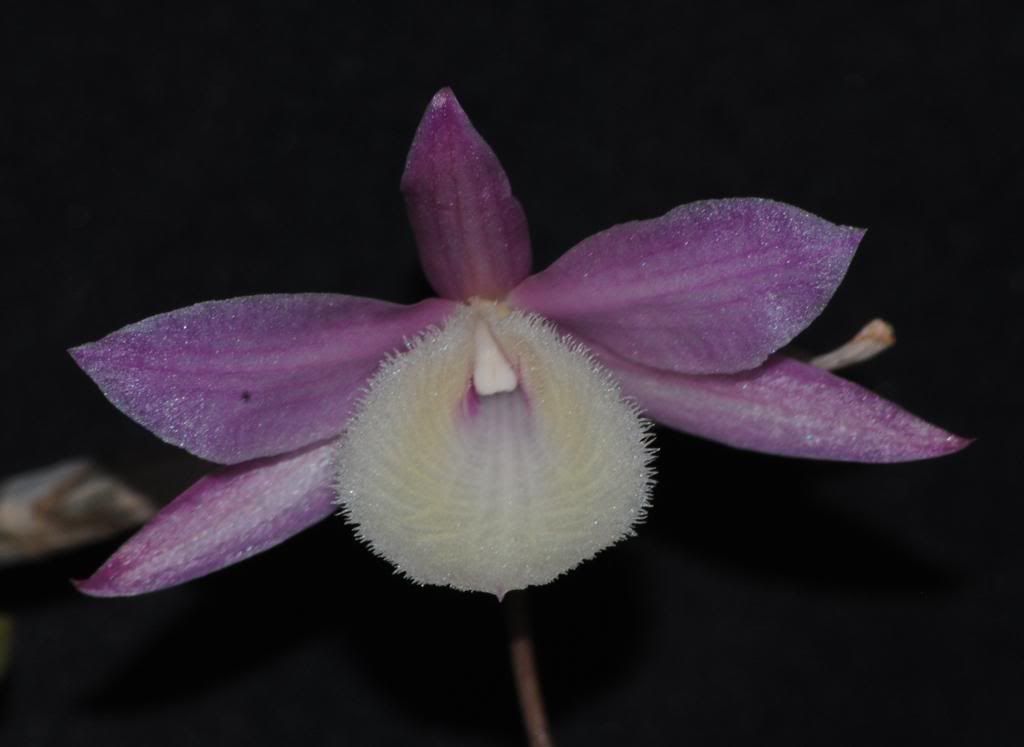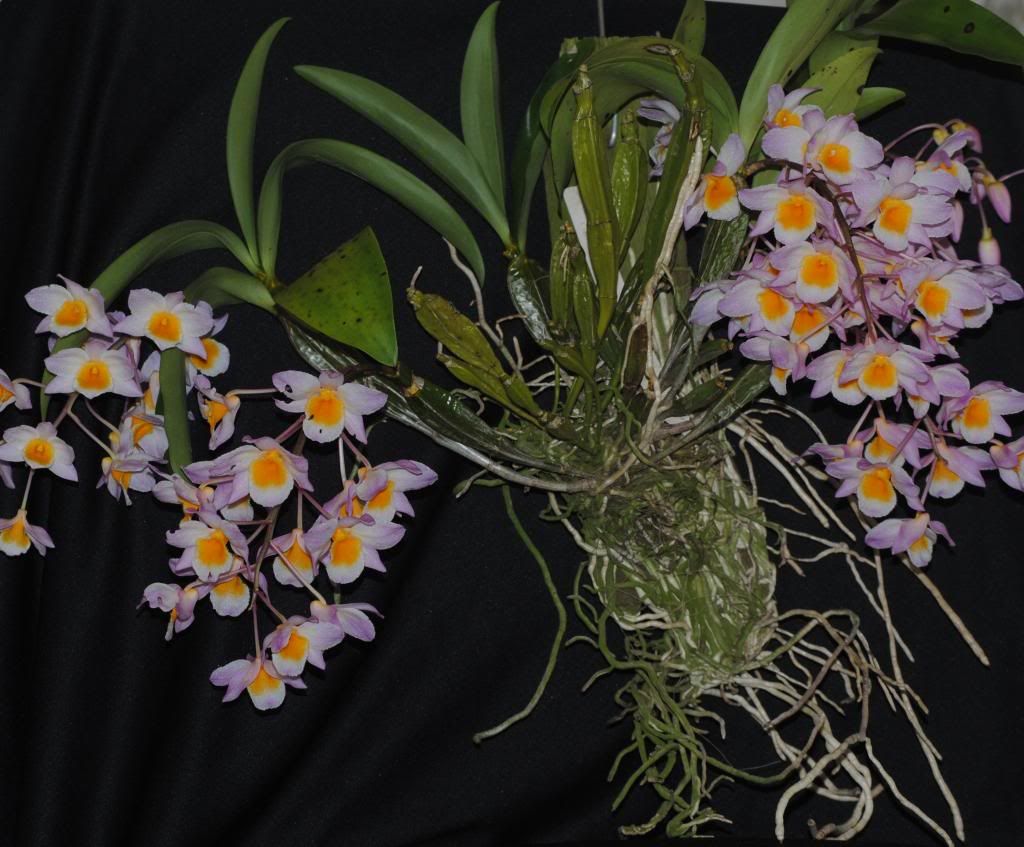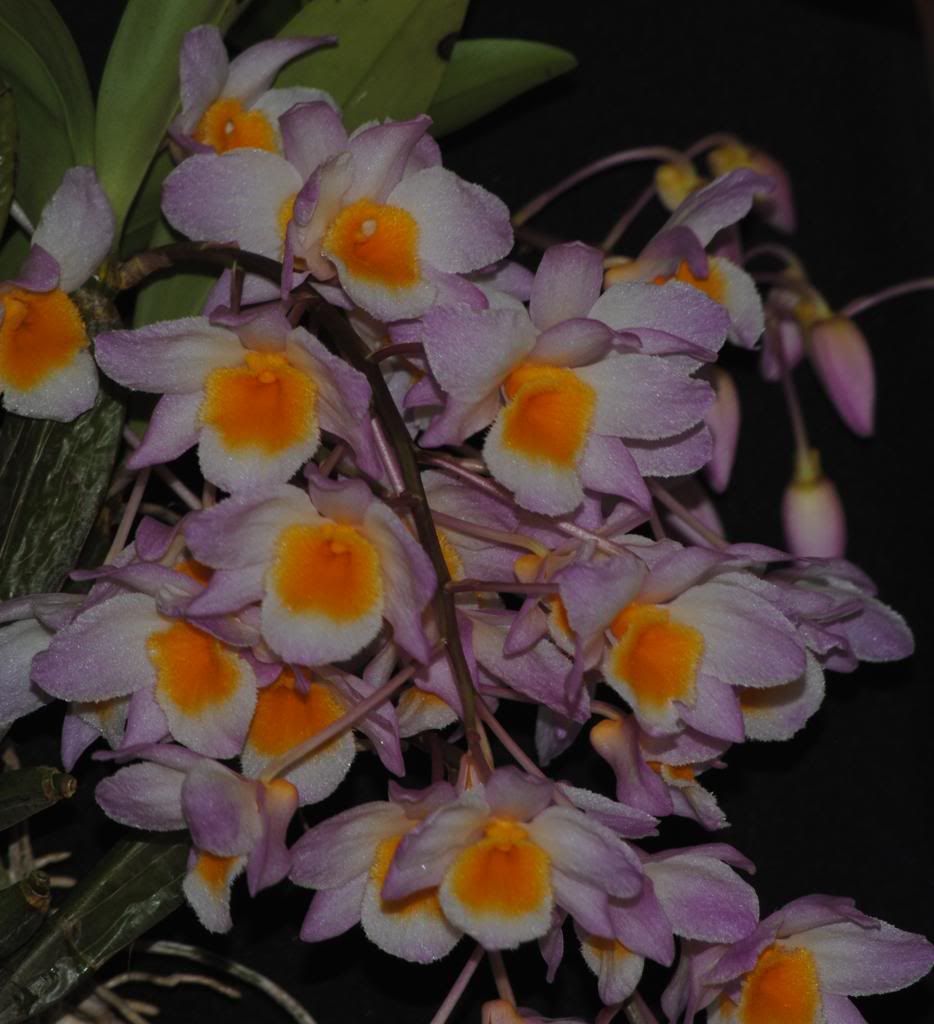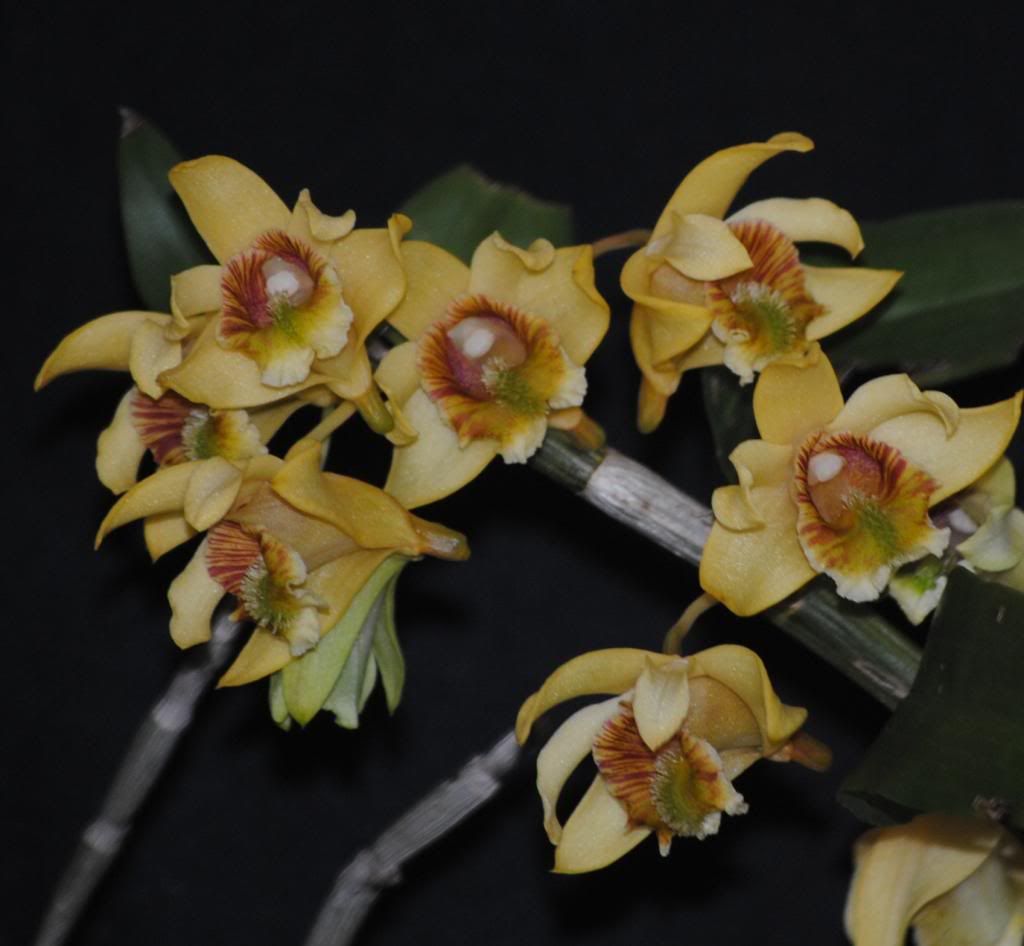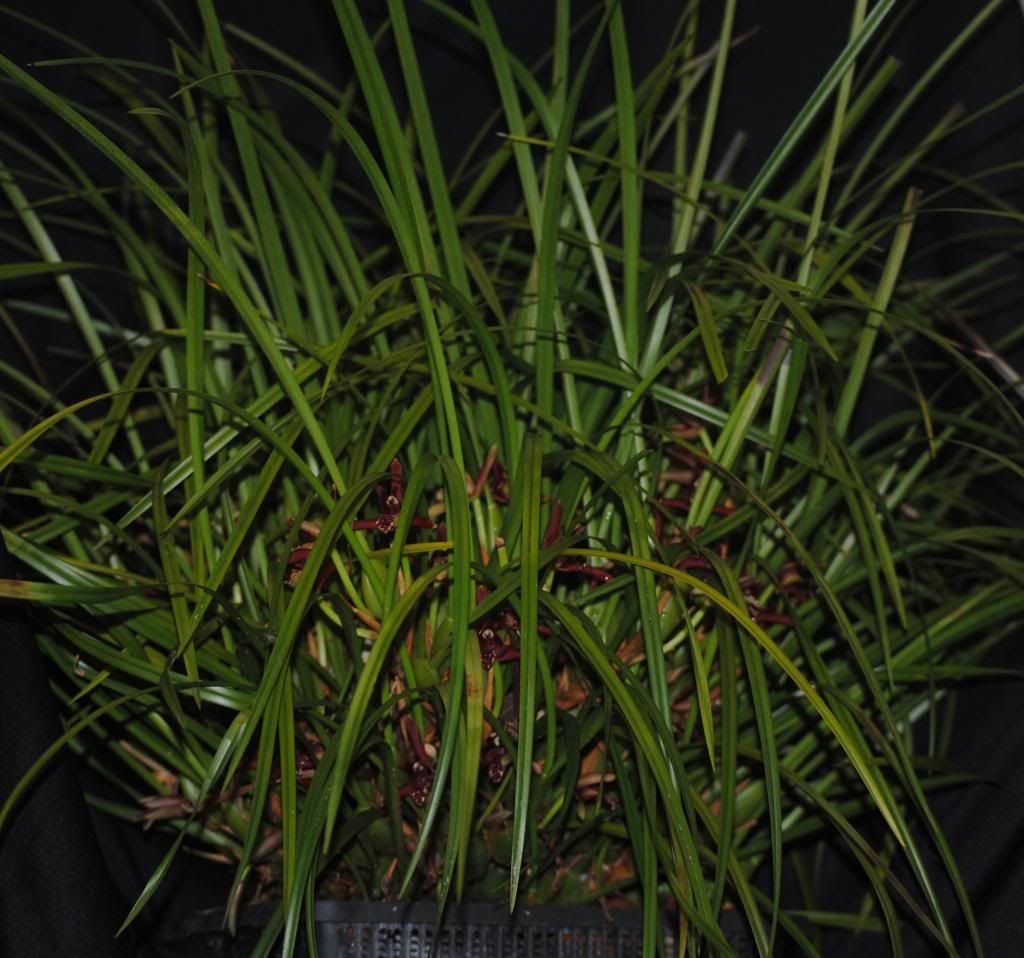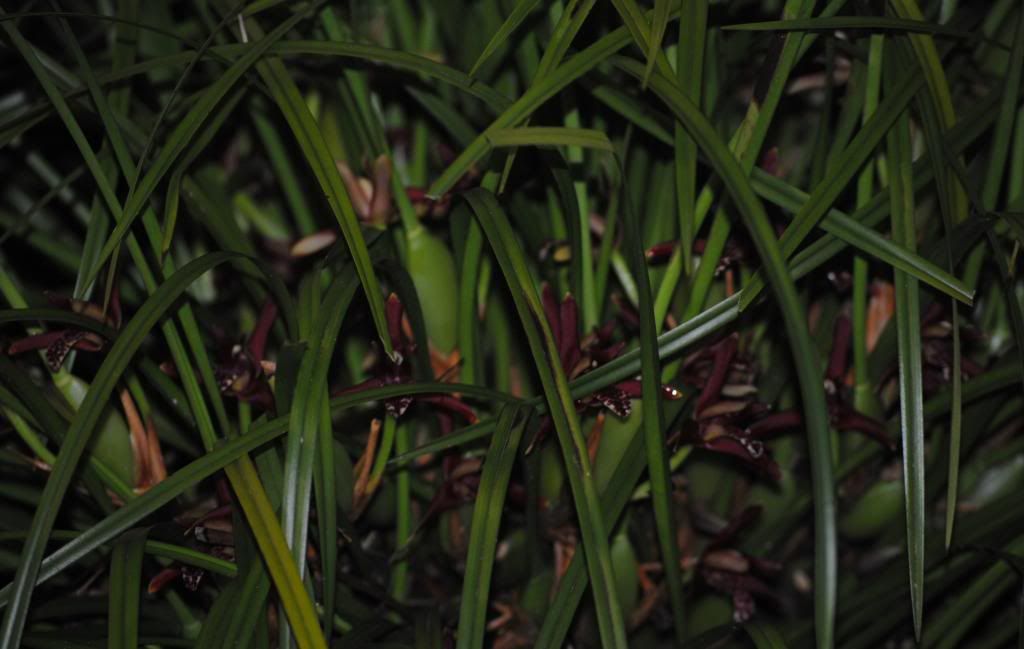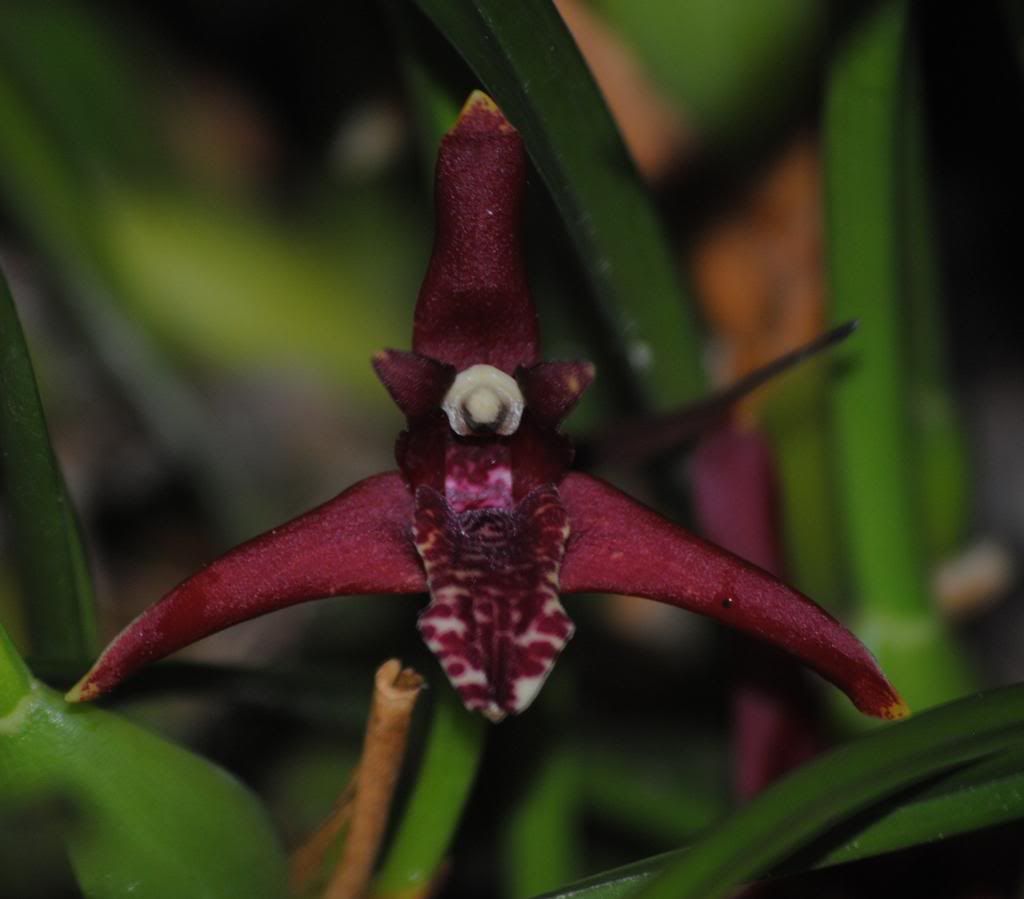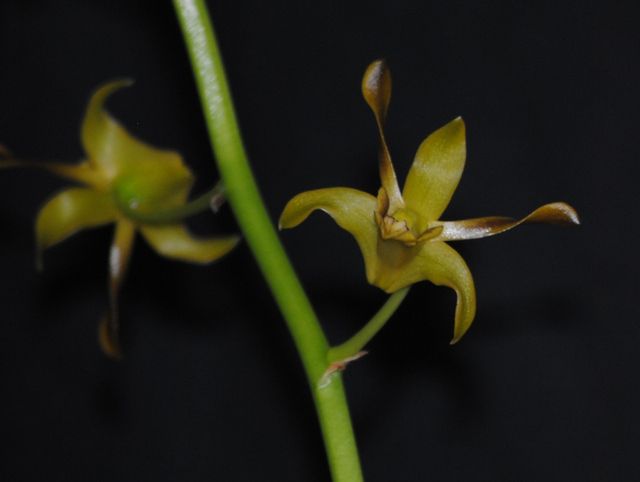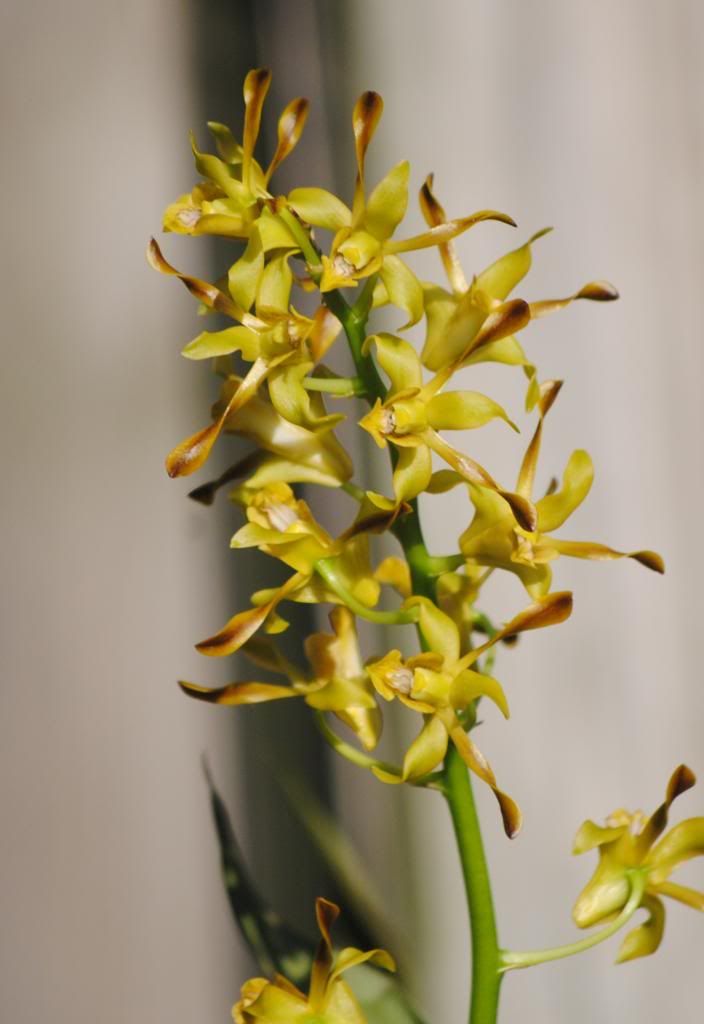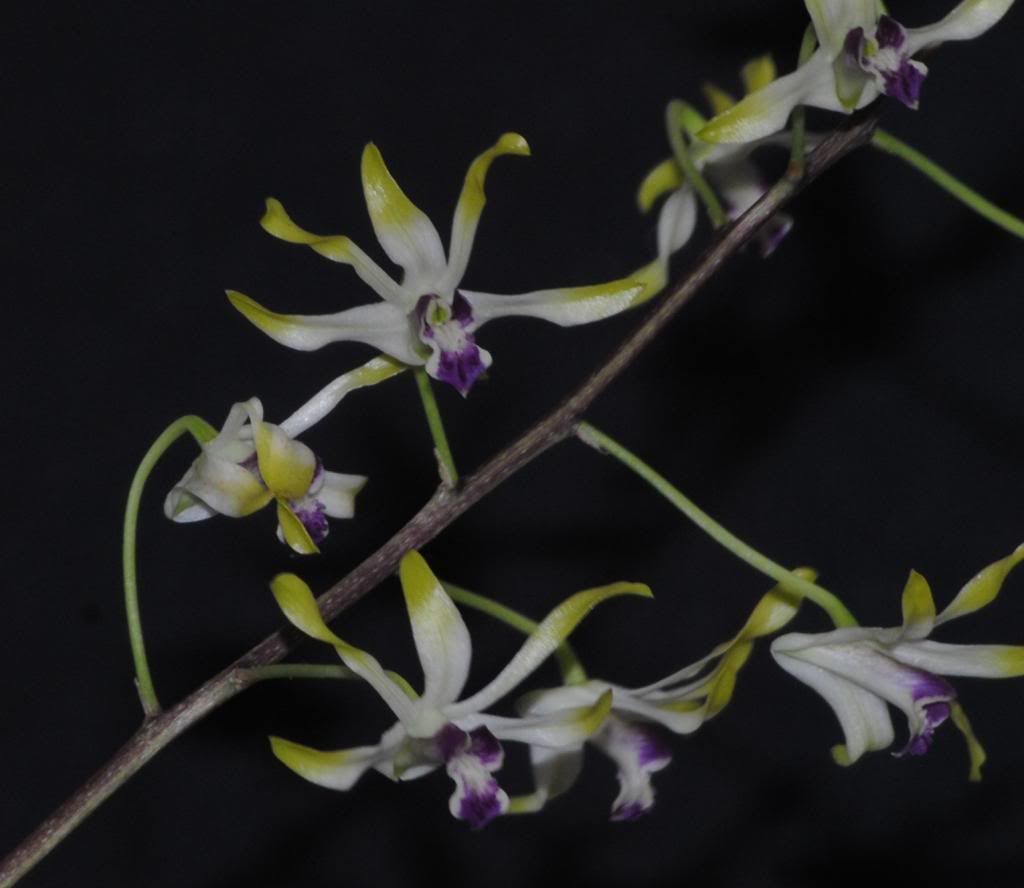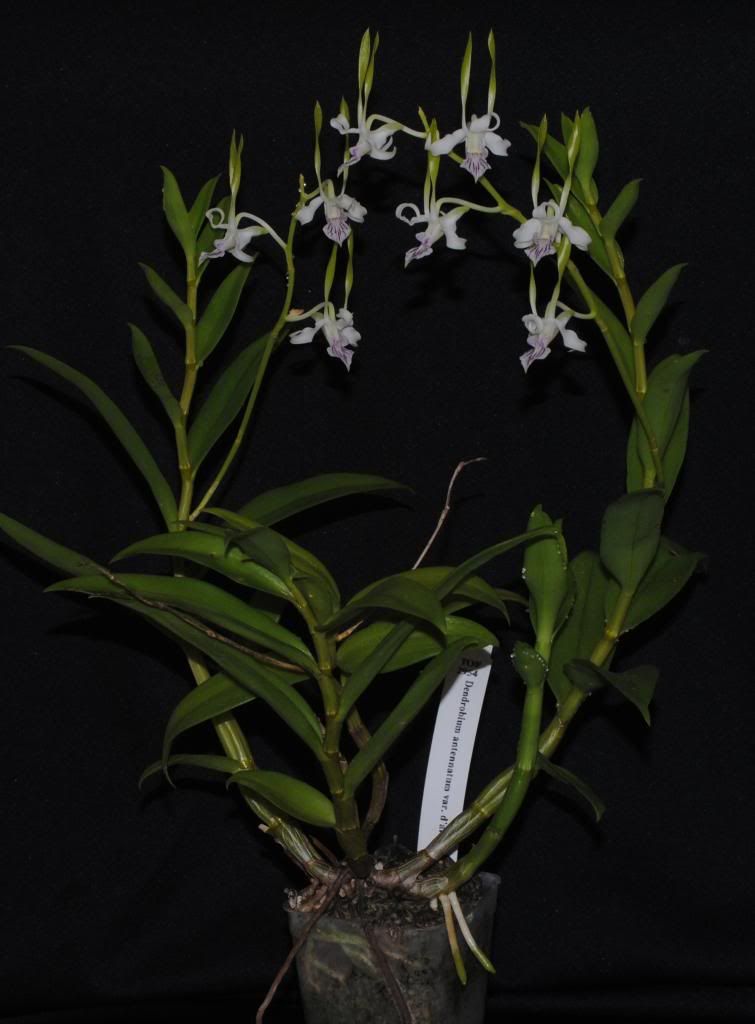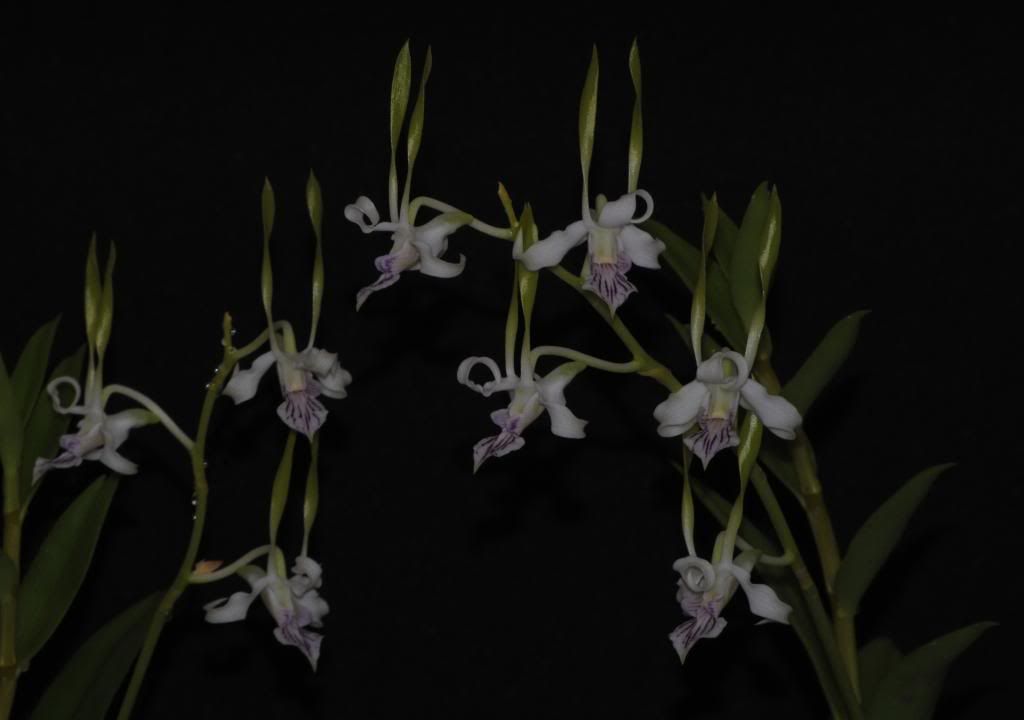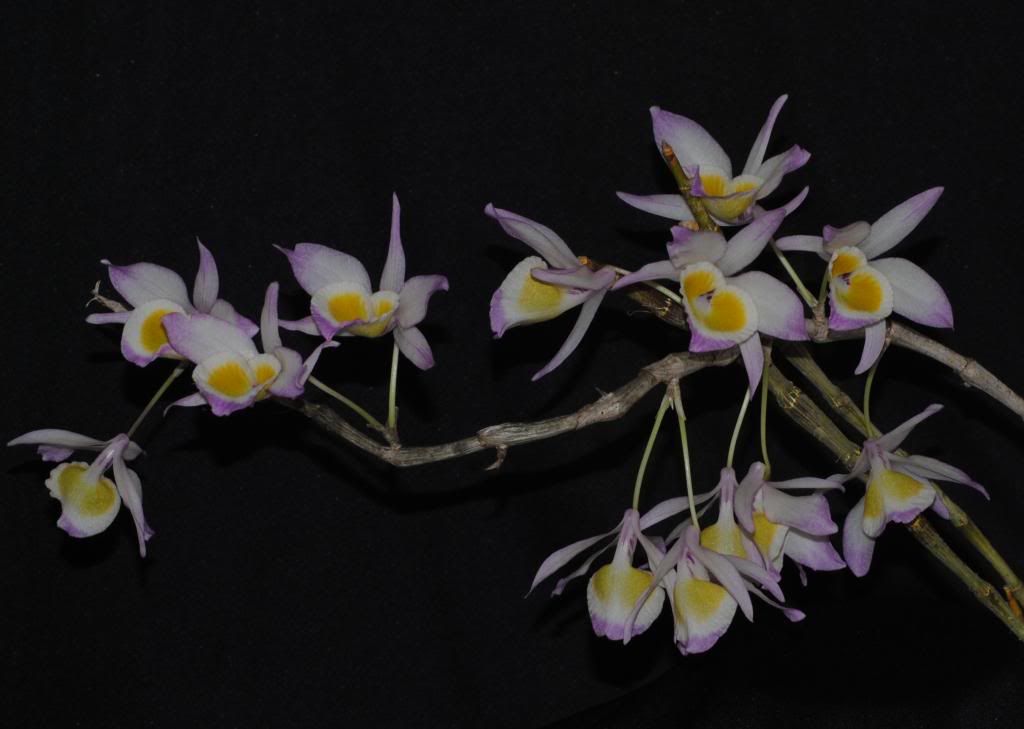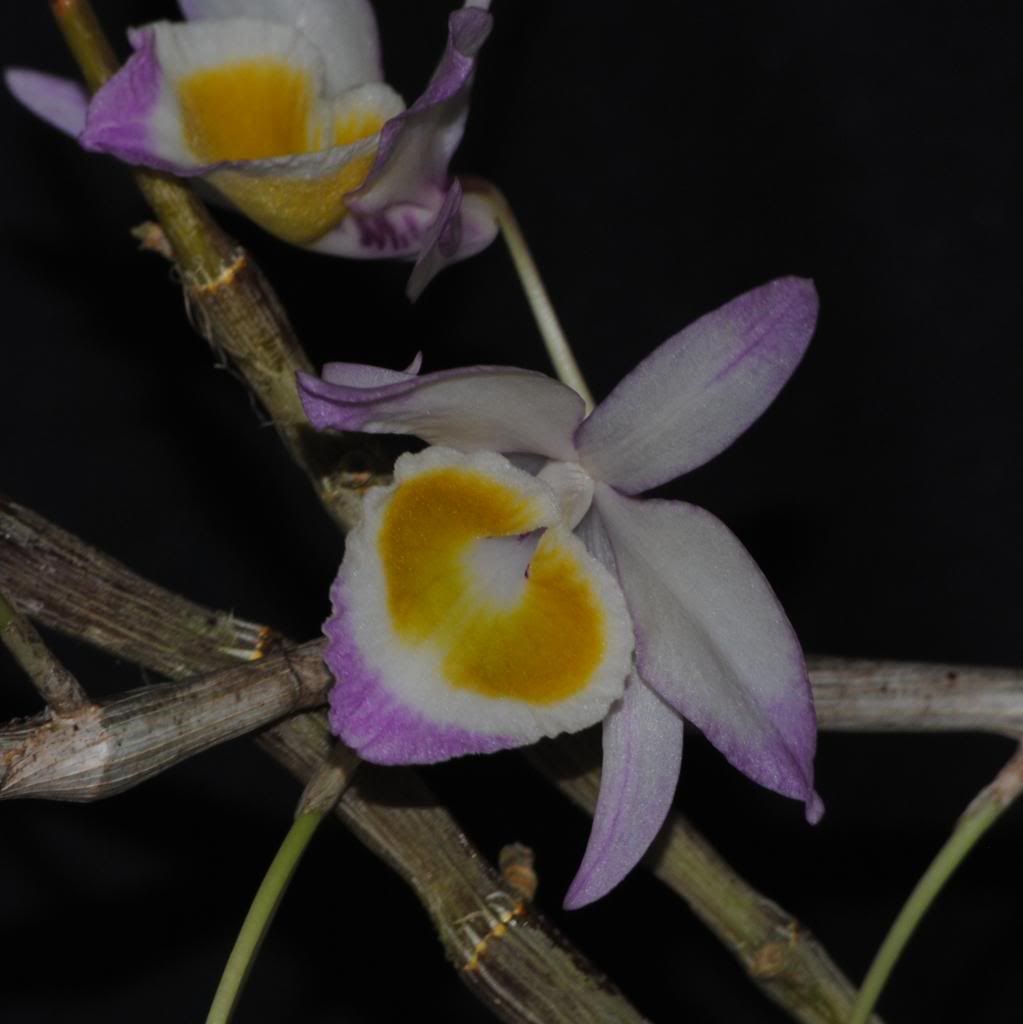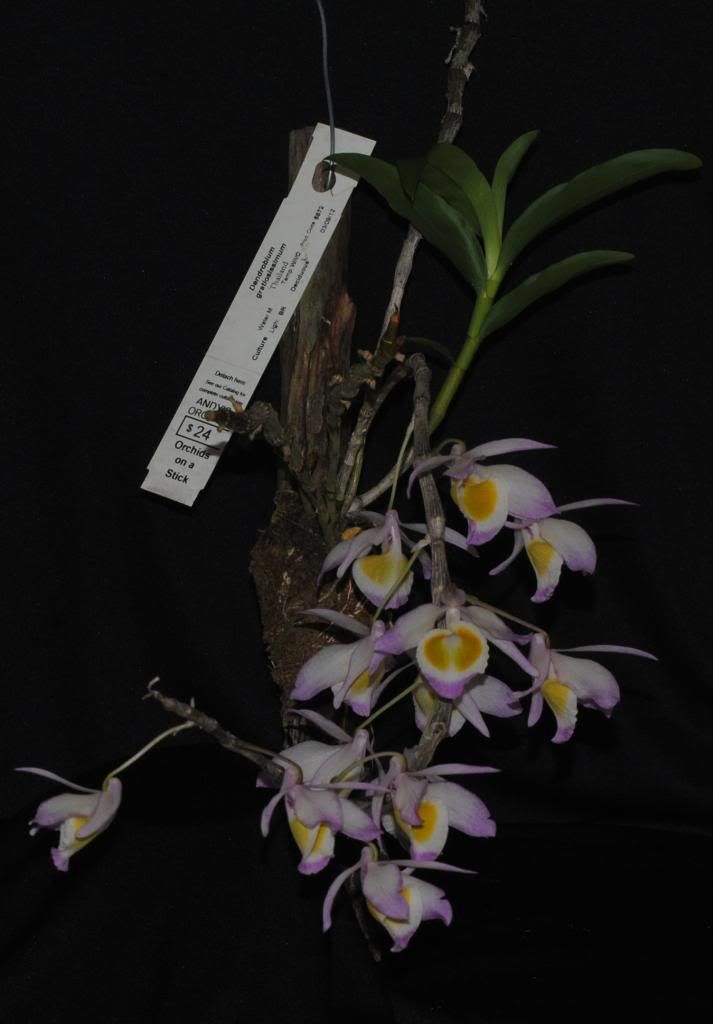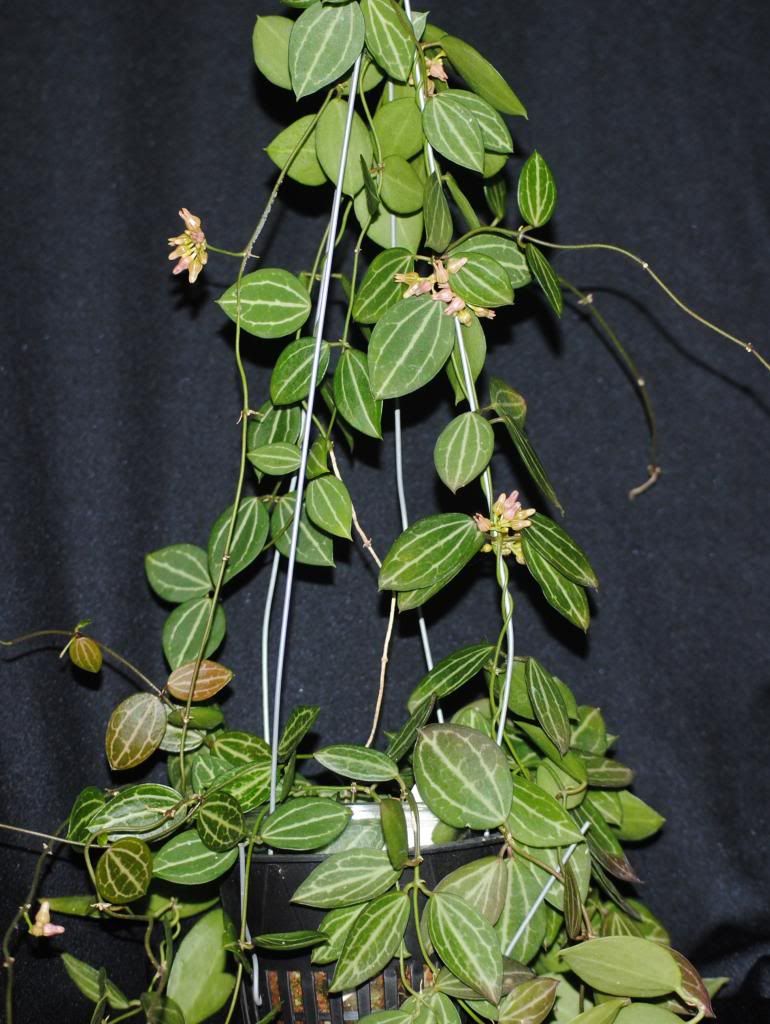I'm not really crazy about the Spatulata Dens, but I seemed to have acquired a few species of them anyways. The first two, D. gouldii and D. attenuatum were included free in orchids orders. D. canaliculatum and carronii I did buy. I grow these a bit differently, and will describe how for each one.
First, D. gouldii, still a relatively small plant, it is currently in a 5 inch pot, with Turface/Perlite mix. It doesn't completely dry out in the warmer months, but I do let it approach dryness in the colder months. So far, I have brought this in for the winter and it's kept at a minimum night temperature of 55F, and grown under T-5s. In the summer, it receives direct sunlight from mid morning until about 2pm - so a lot of light. I fertilize year round, weaker in the winter though. First bloom, two spikes.
Next D. canaliculatum, I bought this recently from L. Del Favero Orchids in Tampa Fl, in spike, so I can't take any credit for this one. It is currently potted in bark in a 2 inch clay pot, but once it is finished blooming, I am going to mount it. No culture info, as I haven't had it long enough to do anything with it.
D. attenuatum is still very much a seedling, in a 2 inch pot, growing in Turface/Perlite mix. I grow this warm, Catt level light, evenly moist in summer, and allowed to approach dryness in winter. This is the second spring it has bloomed for me. The white dots are honeydew, not insects. This plant seems to weep a lot.
And finally, D. carronii, which I have discussed individually about a year and a half ago, but I thought I'd highlight it again. The original post has much better photographs, but this year, it did give me three spikes instead of two. Grown warm, Vanda level light, mounted, lots of water and fertilizer in summer, and no fertilizer and almost no water in winter. First a picture of it from last year again, showing the plant habit,
And I cannot find my photo from this past blooming. But it did have three spikes.
Hope you enjoy!

